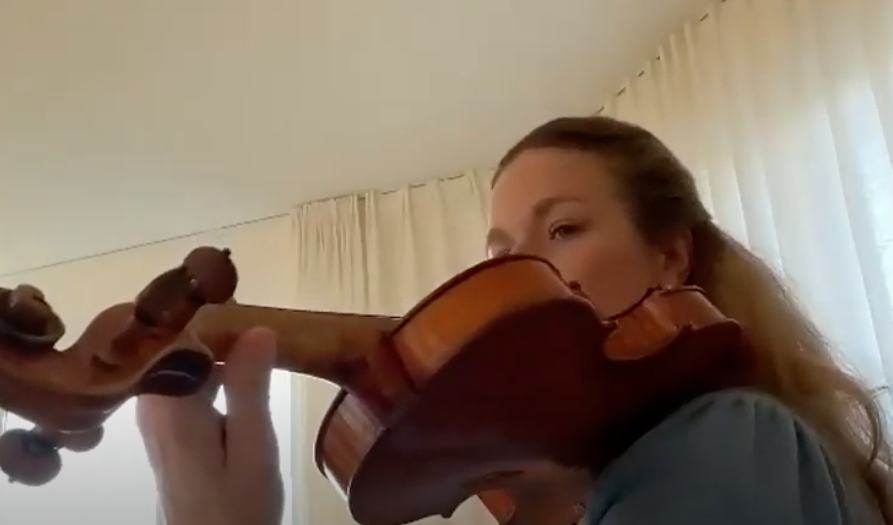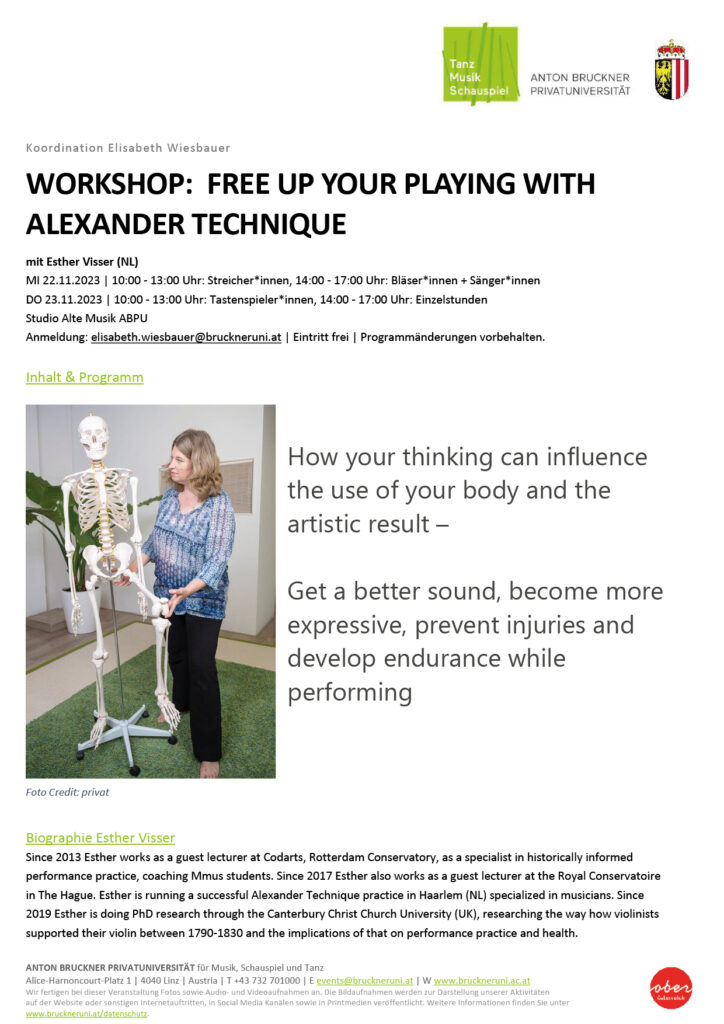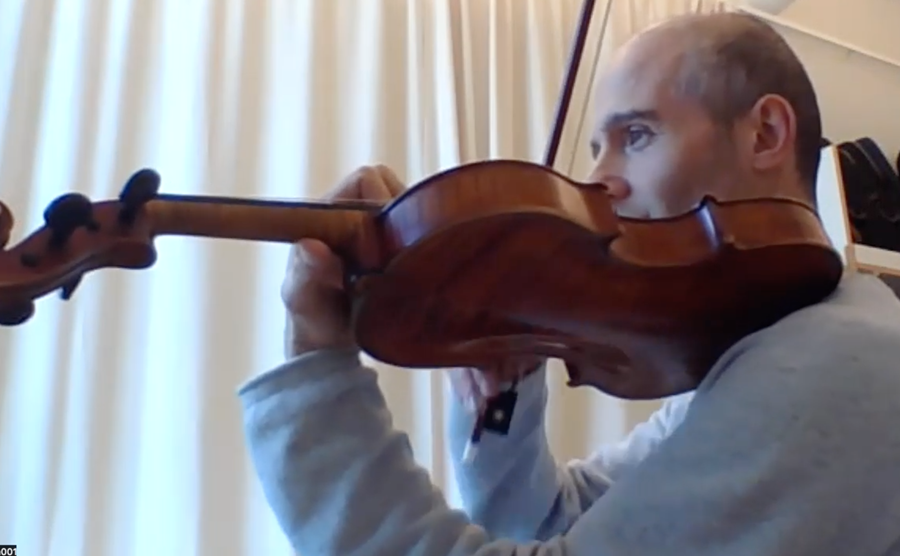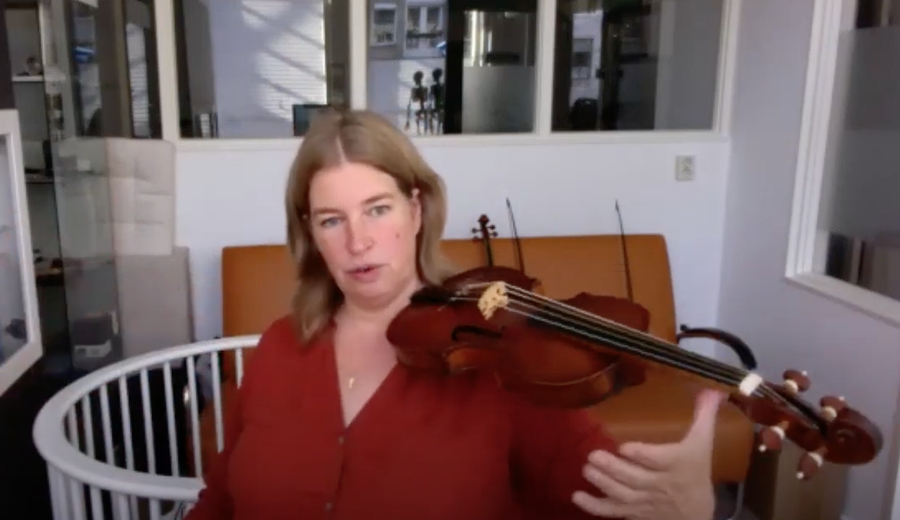
The tenth week of the experiment
Hi everyone,
This is the tenth week of my experiment on playing without a shoulder rest and / or chin rest. Here are some updates and some feedback.
Thank you for sending me your videos, it’s really important for my research. Please keep doing it. We are at different stages, not everyone is in week 10 now, that is completely fine. Everyone can do it in their own tempo.
Again, some more new participants joined as well, welcome to Julia and Els! Many people already filled out the entrance survey. Thanks. If you didn’t do it yet, please do so before you start the lessons.
If you know more people who like to join, for example starting in January, this is still possible through my website. If you missed the newsletter last week, you can still read it here. There is a collection of past newsletters at my website available too.
Please be welcome to join the Zoom session next Wednesday 11.00 AM (Dutch time) if you want… Just to meet or to ask some questions. Would be nice to meet up. You can watch Zoom sessions back on the login page where the video lessons are, as well.
About the Xmas holiday
It would be best if you could continue with the 10 min per day during the holiday, so your learning process will not have an interruption. But if you prefer to take a break, this is fine too, just please let me know, no problem! Our zoom sessions will continue tot take place, also on Wednesday December 28th and January 4th, and after that. Some people already informed me, that usually Wednesday mornings are not possible for them as they have to work, but in the holidays they are free and able to join! So this can be a nice chance to meet up if you are too busy otherwise. Looking forward!
“I think your research is very important and I think you are very right on all the points you raised. I am so thankful that your talk about this, because almost every musician has unhelpful habits.”
– Jun Keller, Vienna Philharmonic Orchestra,
participant in the experiment
Tenth Zoom session
Last Wednesday we had an ninth zoom session with some participants of this experiment. It was lovely. If you want to watch it: I recorded the session and there is a link to it in the login page under the video lessons.
Malina joined from Germany, Isabel joined from Luxembourg and Nicolette joined from England. I met Malina Mantcheva during the International Alexander Technique congress in Berlin last August, where she visited for one day during a tour with her orchestra Anima Eterna. Malina also lives in Sofia, Bulgaria, for a part of her time, but her performing live is mostly in Germany. She told us that she thought she was already playing chin-off, but since she is doing our experiment, she is completely rethinking it and she feels very happy that at her 46th year she is learning so many new things. In corona time Malina also has been teaching yoga and other movements in a clinic and she confesses that actually she wanted to be a dancer, when she was a child, she loves to move.
Malina was born with spina bifida (open back) as a baby, and at 5 years old she was told that playing the violin was not going to work. But she persisted (being a successful professional violinist now!) and she always gives a lot of extra attention to the use of her lower back. That is why she was very happy with our previous lesson about the placement of the chairs in orchestra and all elements about sitting.
She now is in the ninth lesson and her question today is: She is starting to realise that she still uses too much the side of her index finger as a support in difficult passages and it is not helpful. Even the skin of that part of her hand is a bit thinner and more shiny because of it, and she said that her bone even is a bit rounder there than in her other hand. To take the stress of her hand she is sometimes holding the violin with her jaw for a while to be able to relax the left hand, but obviously this is not ideal. She would like to have a more open hand while playing, except for the small moments after a shift, as we practiced.
I explained once more why I really think using all joints in the hand is important (not skipping the base joint) and why using the base joint as a support is not in correspondence with how the use of the hand is designed. We tried it in the air and Maline completely agreed, she even showed us how she feels tension going up to her neck when she makes a straight line with the base joint of the index finger, really interesting.


Malina told us that she received her first lessons from her father, who was one of the last students in Bulgaria from the Franko Belgian tradition. As a child, she learned to play without using a shoulder rest but with a small ridge as a chin rest. Her father told her to support the violin on the base joint of the index finger, so this habit in her is very old. So I stressed, that in her case it really is very important that she takes enough time to repeat lesson 3 and feels completely safe (and soft) while supporting the violin only with the third finger and the thumb.
I am coming back a bit from the idea that the space between the side of the hand and the violin should always be open. For some people with smaller hands, it’s completely fine of the skin of the hand is softly touching the neck of the violin, especially on the lowest two strings and especially on viol, I think. But what is (in my eyes, in this experiment) crucial, is that you don’t squeeze and that you don’t use that part of the hand as a support, except in some small moments after a shift.


Malina played a the first 4 bars of Paganini caprice nr 2 (lesson 9 in this experiment) for us in the zoom session. What I noticed, was that her left wrist was a little bit panting backwards and her elbow was a bit too much pointing inwards, causing unnecessary tension. We worked on placing the third finger on the string together with the support of the thumb and thinking the head going up, with a soft feeling in the hand. The challenge is to translate that way of using the hand to playing Paganini. We decided that she will do week 9 once more, focussing on this soft feeling in her hand, and she was happy to do that!


Isabel van Grysperre also joined, living in Luxembourg. She was born in Belgium, studied modern violin in The Netherlands and after that baroque violin in Switzerland. She plays in the Luxembourg chamber orchestra as leader of the second violins and sometimes as concertmaster. She is also teaching children from 6 till 19 years old. Isabel had many Alexander Technique lessons and very much would like to do the teacher training as well, but life is too busy for her at the moment.
She told us that Alexander Technique helped her a lot with lower back pain she experienced before she to Alexander lessons, caused mainly by the stress of very severe conductors and performance stress, which also caused emotional pain, she thinks. She already experimented with playing without a shoulder rest when she still was studying modern violin, but it never really worked out. When she started baroque violin she felt a bit more free, but unfortunately her teacher in Basel said that because she still also played modern violin, she would never manage to learn to play chin off playing for the baroque violin next to that. I (Esther) think this can work perfectly, as we spoke about earlier in these news letters, by having two kind of ‘departments’ in your head. It’s a pity that teachers are saying such things. In my opinion, it will work especially well, if you really play the two instruments in a very different way (for example modern with a shoulder rest and baroque completely chin off, so that you don’t get confused).
So this experiment is for Isabel a nice opportunity to really learn to play in a different way, she said. She is doing both experiments (on modern and baroque, modern with chin rest and baroque without chin rest, sending me two videos every week. She also thinks it will help her pupils she is teaching.


Her question is about playing the glissandi without chin rest: How to get the thumb back after sliding down. We did an exercise together, to help the shifting technique, to balance to violin only on the base joint of the index finger and make circles in the air with the thumb.


Malina had to leave the meeting, but just added the comment that she observed that she thinks that for me (Esther) these kind of exercises are much easier because of my years of experience with the Alexander Technique and big awareness. There is no any fear of dropping the violin anymore, while she sees that with the participants in our zoom sessions, many people are for example lifting the left shoulder out of fear, wanting to ‘hold’ the violin. Of course that is a very good remark and completely true. Doing these things for the first time is not easy at all and takes a lot of practice and patience. I already have made a preliminary conclusion that a pre set time table of 12 weeks is not really working. It should be a ’12 step’ program and everyone should take as much time as they need for every step… So thank you, Malina, for making that remark!
Isabel and me then worked on the spirals that are working inside us. In the mean time Nicolette form London also joined us. It seemed to both Nicolette and me that when Isabel played a scale, she had a quite strong ‘twist’ in the back, like many violinists have. She told that also in orchestra she feels herself doing this a lot. I then asked her to stand against a wall with her shoulder blades, while playing.


We also saw that her weight was more on the left leg than on the right leg, which is reinforcing this twist in the back to the right. So in other words. her left upper body had to open up and the weight should fall down in the right foot (opposites!). This makes a kind of spiral, opening upwards.


Of course moving while bowing is natural, to keep the balance, one should not stay stiff in one ‘posture’. Alexander Technique is not about posture. But to open up these spirals helps all joints to become more free, the pelvis becomes more fluid somehow and the sound becomes better. Nicolette also very much agreed about this, seen from Feldenkrais point of view.
We also spoke about double jointedness. Isabel has this as well, and in fact I (Esther) too. My experience after changing to this way of supporting the instrument was that my thumb somehow got much stronger in a healthy way. I expect the same for Isabel. Maaike Aarts, an Alexander teacher and violinist from Holland, participant in this experiment as well, also told me some weeks ago that she felt her left thumb becoming ‘broader and opener’, which is a very nice description of what is happening, I think. It just takes some time and practice. Nicolette explained it in this way: You will give more ‘work’ to the mouse of the thumb, which is designed to do work, in stead of to the finger tip, which is not designed for it.
Thank you so much for coming to the Zoom session, Isabel, it was nice to work together!

Some encouraging remarks for lesson 10
For those who are there already: In lesson 10 we are applying the things we developed in previous lessons to playing section B of Paganini Caprice nr 2 (bar 5-8). The most important thing is to stay aware what your left thumb is doing, are you still in contact with it? Can you use panoramic view, balance on your feet, thinking up, while playing these bars? In addition to these, part B also is a bit about string crossings. Can you skip 2 strings, with a jumping bow, without making the violin ‘wobble’? This is a nice test to see if the balance on your collarbone is really stable. Also make sure that when you arrive at section C, your thumb ends up in a high enough place (around second position). Looking forward to see your videos! Don’t worry if some notes are out of tune for example…it’s just for me to see the process, it does not need to be perfect, at all.
Please take your time
It is important that everyone in this experiment enjoys the curiosity we have, and take part in a joyful and playful way. In that way, we learn the best. Don’t try too much to ‘do it right’…and don’t hurry. If you need more time, just let me know, keep me informed, and we take a bit longer. No problem!
Best regards, please let me know if you have questions,
Esther Visser





























